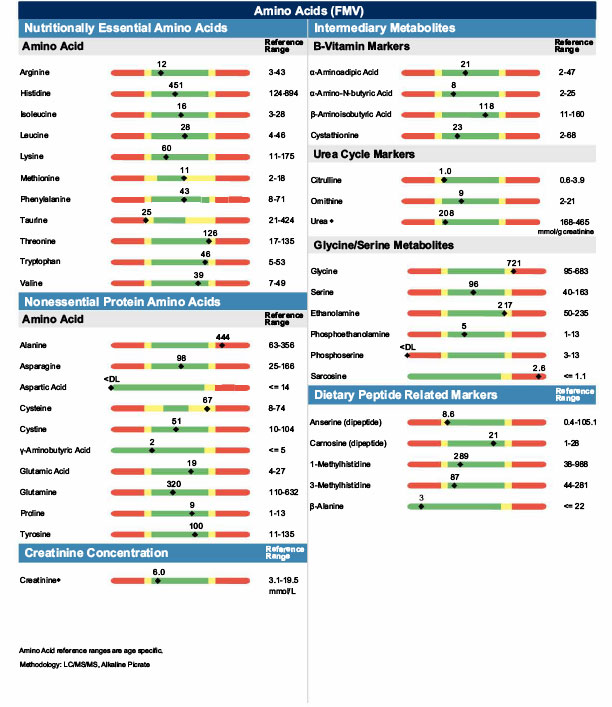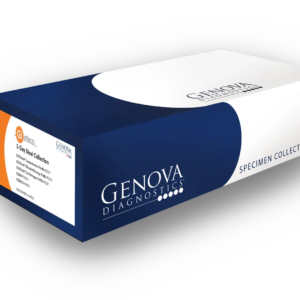
Quick Dispatch, Hassle-Free Returns, Professional Results
Convenient Delivery:
- Direct to Your Home: PW Therapy partners with top laboratories to deliver test kits right to your door after you make a purchase. We handle all outgoing postage costs.
- Delivery Timeline: Expect your kit within five working days, although this may shift due to external circumstances beyond our control.
Simple Test Return Procedure:
- Return Options: Once you’ve completed the test, send it back to the lab using the pre-provided courier slip or choose to use Royal Mail services.
- Cost-Effective Return: Sending your test back to us is economical, with postage to the labs costing only £5-10.
Prompt Results Processing:
- Results in 48 Hours: After PW Therapy receives your test results, we commit to processing and sending them to you within 48 hours.
- Expert Consultations Available: For a detailed understanding of your results and tailored advice on next steps, please book a consultation with our specialist team.
Description
A Personalized Approach to Amino Acid and Micronutrient Assessment
The Amino Acids Analysis, Urine is a first morning void (FMV) collection that measures 40 amino acids and intermediary metabolites. The report includes personalized amino acid recommendations based on amino acid levels, and functional vitamin and mineral cofactor recommendations based amino acid metabolism. Amino acids are important building blocks for every cell and system in the body, and require specific nutrients for metabolism and utilization.
When should testing for Amino Acids, Urine be considered?
Amino acids are single unit building blocks that form protein. They play many important roles in the body including energy generation, neurotransmitter and hormone synthesis, tissue growth and repair, immune function, blood cell formation, maintenance of muscle mass, and detoxification. Testing is important in a variety of clinical scenarios. Certain dietary and lifestyle factors or conditions may predispose a person to having amino acid imbalances. There are multiple factors that influence amino acid levels including dietary intake, liver and kidney function, protein biosynthesis and degradation, hormone imbalance, stress, exercise, and intestinal health.1
Symptoms and conditions associated with urine amino acid imbalances
- Autism2-4
- Malnutrition or poor protein intake5
- Maldigestion/Malabsorption
- Fatigue6-8
- Kidney disease9
- Liver disease
- Obesity/Insulin resistance/ Diabetes10,11
*Genova’s amino acid reference ranges were not designed to be used for the diagnosis of Inborn Errors of Metabolism.
The Amino Acids Analysis, Urine Biomarkers
The biomarkers included in the Amino Acids Analysis are arranged as follows:

- Essential Amino Acids must be derived from dietary sources
- Nonessential Amino Acids are synthesized by the body
- Intermediary Metabolites are byproducts of amino acid metabolism
- B Vitamin Markers are involved in biochemical reactions that specifically require B vitamins
- Urea Cycle Markers are byproducts associated with nitrogen detoxification
- Glycine/Serine Metabolites are involved in the choline to acetylcholine (neurotransmitter) pathway as well as methylation pathways
- Dietary Peptide Related Markers can indicate incomplete protein breakdown
What is the difference between plasma and urine amino acids?
Certain analytes are measurable in blood versus urine and selection of sample type depends on the clinical concern. Urine amino acids have been shown to correlate with protein intake and with plasma concentrations.12,13 The key differences between plasma and urine amino acids are summarized below.1,9
| Plasma Amino Acids (Fasting) | Urine Amino Acids (First Morning Void) |
| Fasting sample represents “steady state” pool of amino acids; not affected by short-term diet fluctuations | Represents recent dietary intake and metabolism – more variable compared to plasma |
| 36 analytes | 40 analytes |
| Useful for mood disorders, or uncontrolled diets | Useful for controlled diets, or to assess the effects of a recent dietary change |
| Amino acid levels influenced by abnormal kidney function; preferred if patient has proteinuria | Amino acid levels influenced by abnormal kidney function; urine testing dependent on healthy kidney function (biomarkers ratioed to urine creatinine) |
| Requires a blood draw | Ideal for children or adults who do not like blood draws; urine conveniently collected at home |
What advantage does the Amino Acids Analysis, Urine offer compared to other diagnostics?
The Amino Acids Analysis identifies amino acid imbalances and potential vitamin and mineral needs for healthy amino acid metabolism. Genova provides a user-friendly report with clinically actionable results including:
- Suggested amino acid recommendations based on the patient’s direct amino acid measurements
- Suggested digestive support and vitamin and mineral recommendations based on an algorithmic calculation of functional need for cofactors in amino acid metabolism
- Interpretation-At-A-Glance pages provide educational information on nutrient function, causes and complications of deficiencies, and dietary sources
A first morning void collection is more convenient compared to a 24-hour collection and no important differences in mean amino acid concentrations have been reported in adults. Random urine samples can be more affected by food intake than 24-hour urine collections, with early morning, fasting specimens being the least affected.14
Amino acid testing is often ordered for infant screening or in children suspected of having an inborn error of metabolism. Genova’s Amino Acid Analysis reference ranges were not designed for diagnosing these conditions. A patient with a clinical picture that is suggestive of one of these conditions warrants appropriate testing.
Genova’s Methodology
Urine amino acids are measured via LC/MS/MS. Reference ranges are age and gender specific and are based on a questionnaire-qualified healthy cohort. Testing is not recommended for patients under 2 years old.
What can clinicians and patients expect from Amino Acid testing?
Personalized recommendations for amino acids, vitamins, minerals and digestive enzymes are provided for each patient. Nutritional needs may be addressed with supplements or diet, and further analysis may be required if maldigestion or malabsorption is suspected. Comprehensive stool testing or SIBO breath testing may be appropriate to investigate the possible cause for maldigestion/malabsorption.
References
- Broer S, Broer A. Amino acid homeostasis and signalling in mammalian cells and organisms. The Biochemical journal. 2017;474(12):1935-1963.
- Liu A, Zhou W, Qu L, et al. Altered Urinary Amino Acids in Children With Autism Spectrum Disorders. Frontiers in cellular neuroscience. 2019;13:7.
- Li C, Shen K, Chu L, Liu P, Song Y, Kang X. Decreased levels of urinary free amino acids in children with autism spectrum disorder. Journal of clinical neuroscience : official journal of the Neurosurgical Society of Australasia. 2018;54:45-49.
- Kaluzna-Czaplinska J, Jozwik-Pruska J, Chirumbolo S, Bjorklund G. Tryptophan status in autism spectrum disorder and the influence of supplementation on its level. Metabolic brain disease. 2017;32(5):1585-1593.
- Holmgren G. Effect of low, normal and high dietary protein intake on urinary amino acid excretion and plasma aminogram in children. Nutrition and metabolism. 1974;16(4):223-237.
- Dunstan RH, Sparkes DL, Macdonald MM, et al. Diverse characteristics of the urinary excretion of amino acids in humans and the use of amino acid supplementation to reduce fatigue and sub-health in adults. Nutrition journal. 2017;16(1):19.
- Hugh Dunstan R, Sparkes DL, Macdonald MM, et al. Altered amino acid homeostasis and the development of fatigue by breast cancer radiotherapy patients: A pilot study. Clinical biochemistry. 2011;44(2-3):208-215.
- Niblett SH, King KE, Dunstan RH, et al. Hematologic and urinary excretion anomalies in patients with chronic fatigue syndrome. Experimental biology and medicine (Maywood, NJ). 2007;232(8):1041-1049.
- Duranton F, Lundin U, Gayrard N, et al. Plasma and urinary amino acid metabolomic profiling in patients with different levels of kidney function. Clinical journal of the American Society of Nephrology : CJASN. 2014;9(1):37-45.
- Durá-Travé T, Gallinas-Victoriano F, Cortes-Castell E, Moya-Benavent M. Amino Acid Plasma Concentrations and Urinary Excretion in Young Diabetics. In: Diabetes and Its Complications. IntechOpen; 2017.
- Giesbertz P, Daniel H. Branched-chain amino acids as biomarkers in diabetes. Current opinion in clinical nutrition and metabolic care. 2016;19(1):48-54.
- Polberger SK, Axelsson IE, Raiha NC. Amino acid concentrations in plasma and urine in very low birth weight infants fed protein-unenriched or human milk protein-enriched human milk. Pediatrics. 1990;86(6):909-915.
- Derezinski P, Klupczynska A, Sawicki W, Palka JA, Kokot ZJ. Amino Acid Profiles of Serum and Urine in Search for Prostate Cancer Biomarkers: a Pilot Study. International journal of medical sciences. 2017;14(1):1-12.
- Venta R. Year-long validation study and reference values for urinary amino acids using a reversed-phase HPLC method. Clinical chemistry. 2001;47(3):575-583.




